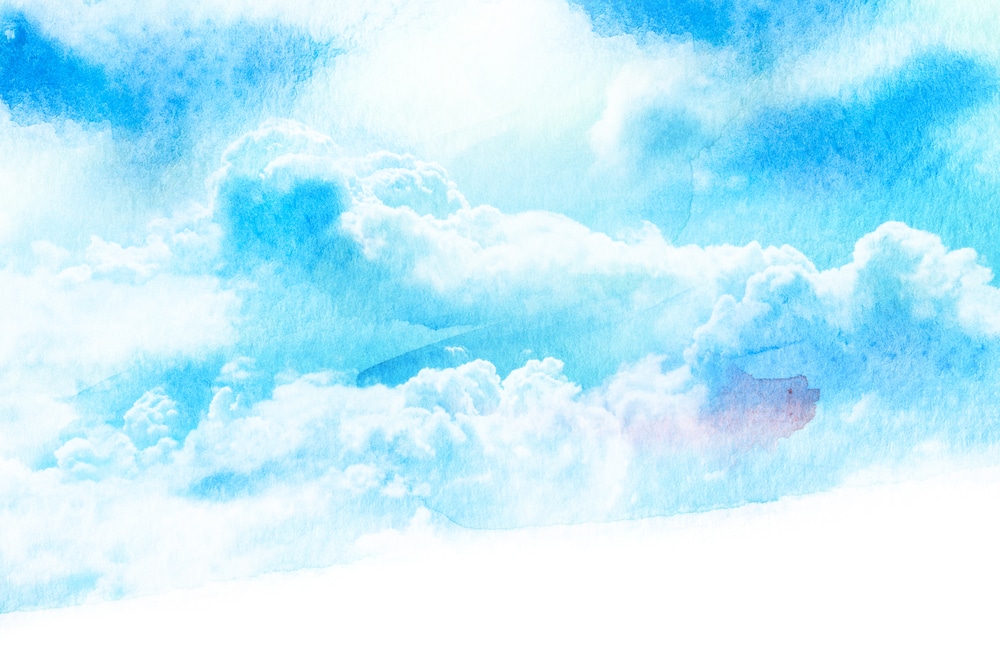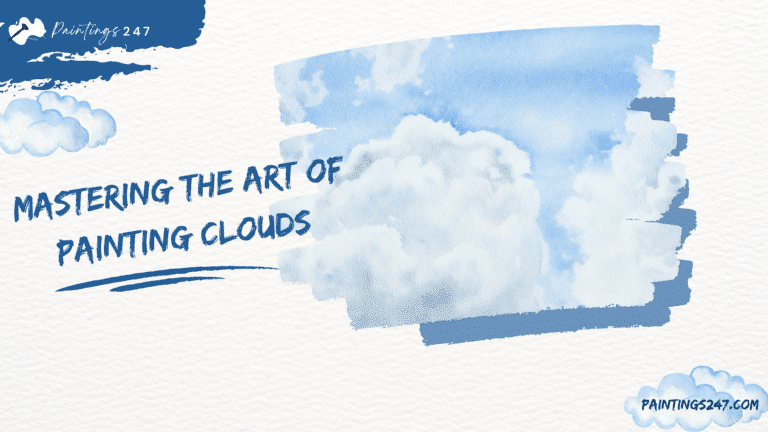Ah, the feeling of looking at beautiful white clouds in the sky. Seeing them who doesn’t like painting soft clouds out of white paint? Moreover, the beauty of the blue sky is unmatched. However, many of you are just mere beginners at painting. Painting can sometimes be a tough job, especially when you have to paint the ceilings of your house. Having said that, you can also paint clouds on a ceiling. Now, you can also bring your inner painting artist alive. Let us look for the perfect way to paint soft white clouds with our brush.
Painting Soft White Clouds
Learning how to paint clouds can be like beginning to paint the wind: it’s fleeting, big, and always changing. The canvas turns into a playground where the sky’s drama plays out, with each stroke a dance of light and shade. Different colored and shaped clouds offer both a task and an opportunity to artists of all levels. From the calm blues of a calm day to the dramatic mix of stormy skies, we’ll take you through the process step by step, making cloud painting less mysterious. Let’s paint the sky together. Get your paints out and dip them in the pots of white and blue paint.

Tips Before Painting Clouds
Before drawing clouds, you need to understand a few basic rules that will help you take your work from average to outstanding. Before you start, here are three important things to think about;
Find the Light Source
Figure out where the light in the scene is coming from.
- This will determine which parts of the clouds look brightest and darkest.
- Figuring out the light source is important for making realistic cloud shapes, whether it’s the sun above, behind, below, or a mix of the three.
Keep the edges soft
Clouds are ethereal and always changing, so their edges aren’t clear.
- It is very important to soften the edges, especially when using acrylics, which can make it hard to get smooth changes.
- Allow the flow of clouds to inspire you by keeping the edges of your picture soft and blended.
Mix palette colors
Prepare your palette by combining mixed colors for highlights, half-tones, and shadows.
- This ensures that the colors stay the same and are easy to find while painting, especially when drawing big skies.
- Having enough pre-mixed paint helps keep the colors in balance and the edges smooth, which makes your cloud picture look better overall.
By following these tips, you’ll be well on your way to painting the fleeting beauty of clouds, filling the gap between what you see and what you paint. Now that you know these things, let’s start our journey to paint the sky’s constantly changing canvas.

How to Paint Clouds with Acrylics?
You can do many different things when drawing clouds with acrylics because this paint is so flexible. Acrylic paints have just the right thickness and clarity, so artists can try new things and make changes. Acrylic painting lets you make beautiful cloud formations with a lot of depth and volume because they can be layered and blended smoothly. For more reference, you can also take a look at Pinterest cloud painting ideas.
Get the Paper Ready
Use gesso to cover the paper. Pick out different shades of acrylic paint.
- Base Layer: Cover the paper with Cobalt Blue. When you mix Titanium White with water, you get a thin wash that you can use to draw in cloud shapes.
- Clouds Formation: To make cloud groups, use white paint that has been thinned slightly and change the opacity to give the painting depth.
Direction of Light
Think about the direction of the light and use a small brush to add highlights. For closer clouds, put thicker paint on top of the thinner paint.
- Make Contrast: Use a darker shade to add shadows under the clouds, giving the picture more volume and depth.
- Finishing Touches: Look over forms, highlights, and shadows and improve them. Let it dry before putting it on show or varnishing it.
With these easy steps, you can use acrylics on paper to show how beautiful clouds are.

A Step-by-Step Cloud Painting Tutorial
Creating realistic, fluffy clouds is a delightful way to enhance your painting skills. This simple tutorial walks you through each step, with tips on technique and materials to ensure success.
Step 1: Prepare Your Workspace
Set up in a well-lit, ventilated area with all materials within reach. Ensure brushes are clean and ready.
- Organize your tools for smooth workflow.
- Keep a dry cloth handy to clean brushes.
Step 2: Create the Sky Background
Paint the base sky gradient using your 3/4 Wash brush and Cerulean Blue acrylic paint.
- Start with bold strokes at the top.
- Gradually fade the blue with added water as you move downward.
- Aim for a soft, lighter shade near the horizon for depth.
Step 3: Sketch the Clouds
Lightly draw cloud outlines once the background dries.
- Use simple, fluffy shapes.
- Focus on cumulus clouds for a natural, puffy look.

Step 4: Paint the Base of the Clouds
Fill in the cloud shapes with Titanium White paint using the 12 Bright brush.
- Use tapping motions for a textured effect.
- Ensure all sketched areas are covered evenly.
Step 5: Add Depth and Highlights
Enhance the clouds with highlights and subtle shadows.
- Apply diluted Titanium White for highlights on the tops.
- Stipple or press to create texture and contrast.
- Leave some base color visible for realistic depth.
Step 6: Refine and Detail
Blend edges with a clean, dry brush for a polished look.
- Add shadows for a three-dimensional effect.
- Keep light direction consistent for cohesive shading.
Step 7: Final Adjustments
Step back to assess your painting and make adjustments for balance.
- Ensure smooth transitions between colors.
- Let the painting dry completely before sealing or displaying it.
Now following the same method, you can learn how to paint clouds in water color, and you can learn how to paint clouds in oil, using oil paints and brushes. Moreover, you can also make cloud shapes with any kind of paint.

Final Reflections
In the colorful world of painting, getting good at painting clouds is a journey that artists of all kinds are drawn to. Painting clouds is as unique and amazing as the sky, which always changes. You can use brushes wet with acrylics, oils, or watercolors. Understanding how light, shade, and form work together is important for capturing beauty, from a calm blue sky with puffy cumulus clouds to the dramatic dance of storm clouds. With each brush stroke, the whispers of white paint against the deep blue backgrounds take us on a journey through the skies.
In conclusion, whether you want to learn how to paint clouds on the walls or ceilings with celestial wonders or add a touch of the stars to your art, remember that learning to paint clouds reminds us how creative we are.
PAINT THE SKY BLUE!

